Deadstick - Development Update
As mentioned earlier, the delay whilst unforeseen, has allowed us to spend more time developing and refining existing gameplay mechanics as well as identifying what truly makes Deadstick a unique simulator and doubling down on those features.
Much has changed since we last showed the game and it would be impossible to cram everything into this update. The following therefore is a selection of some of the items that the team are most excited to share. Will dive into some of these systems and others in much more detail within future updates!
[h2]Living world[/h2]
[h3]Biomes[/h3]
Whilst much of our focus has been on the underlying terrain generation systems and improving run-time performance, another big addition has been the support of varying terrain biomes. This allows us to have distinct and varied locations within our world, each with their own challenges/considerations as a pilot. From dense forest to sparse tundra and snow capped peaks, pilots will have to learn to quickly adapt to operating in a variety of different conditions and locations all with unique challenges!
[h3]Environmental Effects[/h3]
With an environment comes the need for players to be able to interact with it in their aircraft. Be it snow, mud, grass or gravel, we want each surface to be faithfully represented and have a real impact on the players aircraft.
Many of you will have seen the lengths we went to with the Aircraft damage system to create a real-time dynamic deformation system, ensuring that when you see a dent in a specific location on your aircraft, you know it’s there because you caused it, not because we swapped out a part for a pre-damaged model variant. This feeds heavily into the aircraft ‘survival’ aspect of the game and so, it is only natural we apply this same philosophy to the environment and weather/dirt effects.
As a result, each particle of mud/dirt is accurately simulated and will splatter dynamically all over your, now not so clean, aircraft! These dirt effects aren’t just for show however and will have very real implications on your flying, from obscuring visibility to actually increasing drag and degrading lift on your aircraft.
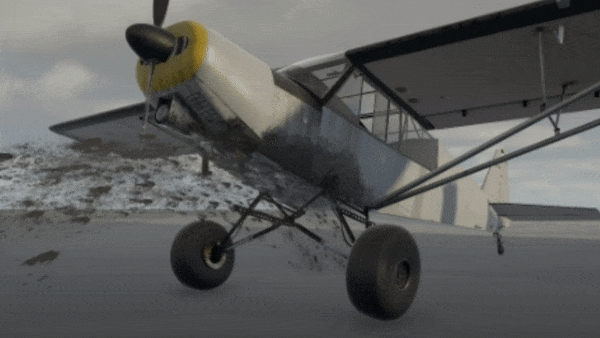
Not only are splatters simulated but so too is the wetness of the mud – wet mud will stick to the aircraft and actually visibly dry out over time. This may sound like an odd thing to simulate, however this will allow for greater interaction of different dirt types when flying around the world and even washing off dirt during wet weather or, when supported, water assisted landings.
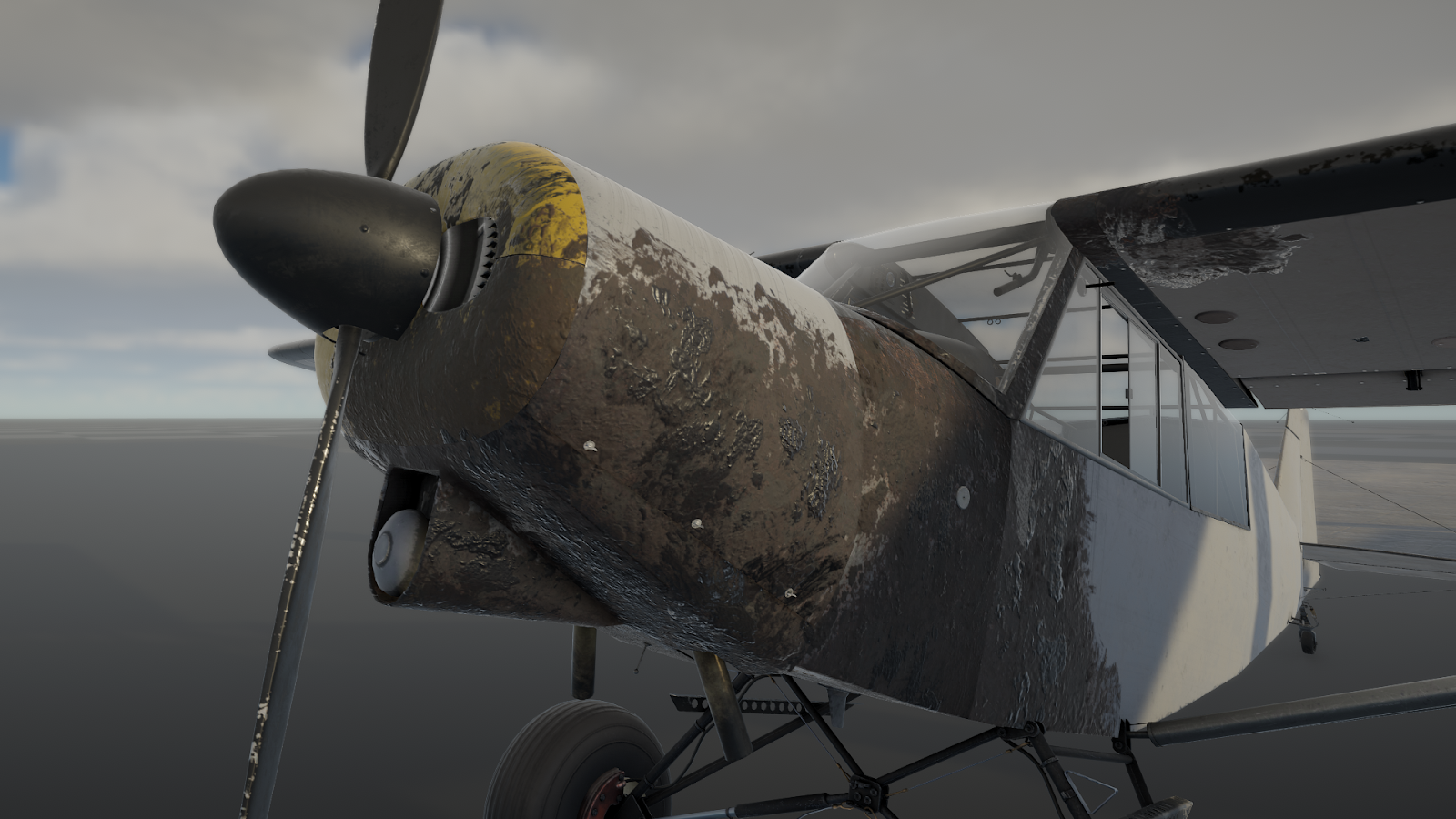
[h3]Multiplayer[/h3]
Whilst a beautiful environment will make for a fun playground to explore in Deadstick, it will not feel alive without other aircraft. To that end multiplayer has always been a key ambition in bringing the world of Deadstick to life. A passive experience in which players don’t have to battle with hosting their own servers, configuring firewalls or sharing IP addresses but, instead, are simply able to enjoy the experience of being a bush pilot and naturally find themselves flying amongst fellow like-minded pilots.
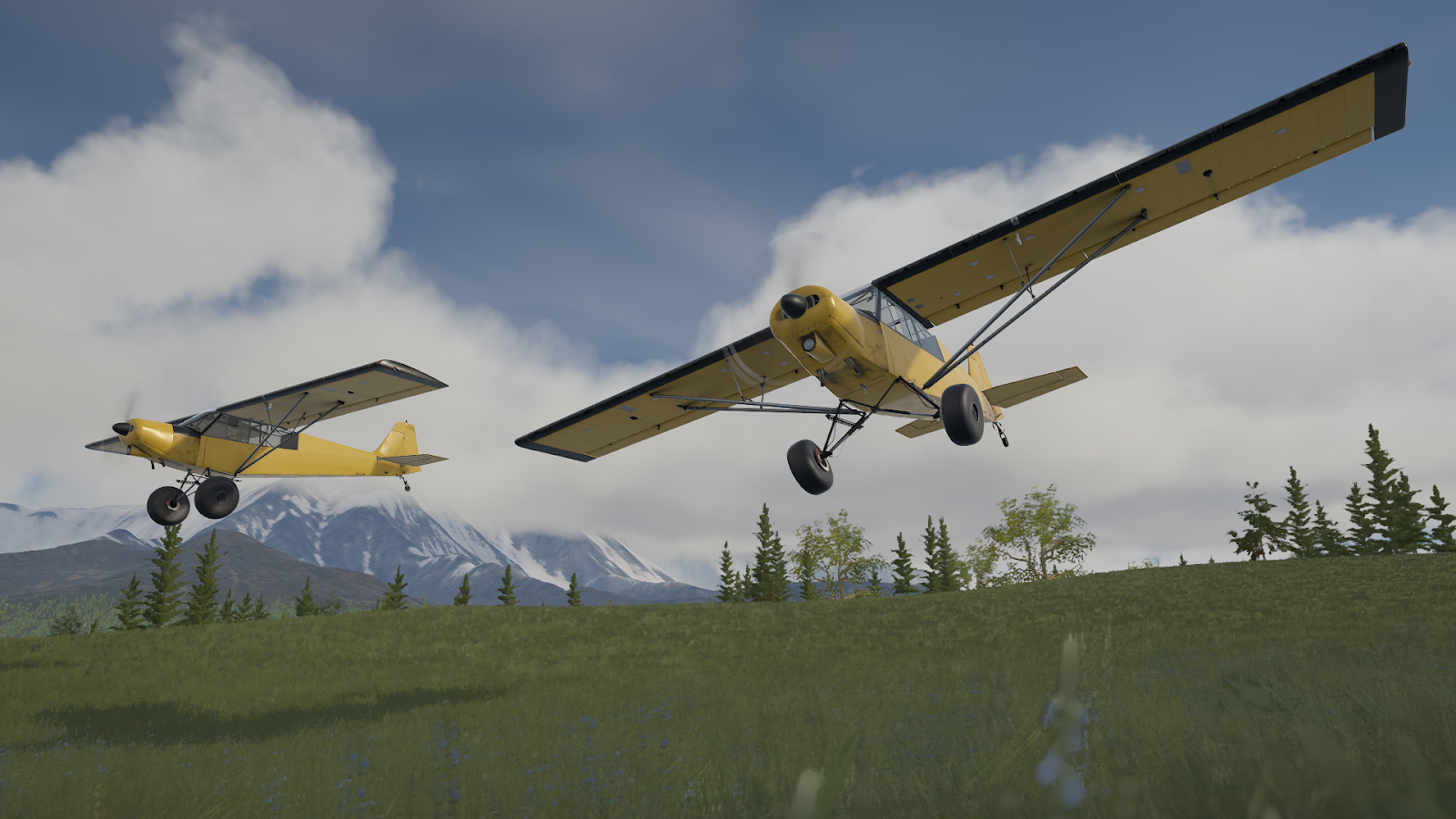
Initially planned for Early Access, this has now been fully realized and requires no effort on the part of the player thanks to our cloud hosted servers. Though it can be disabled if so desired, players will find themselves in a living and inhabited world from the start.
For those pilots who fancy a spot of formation bush flying with their friends, we also have the option of creating private/public rooms in which you can fly together and define your own flying conditions/scenarios.
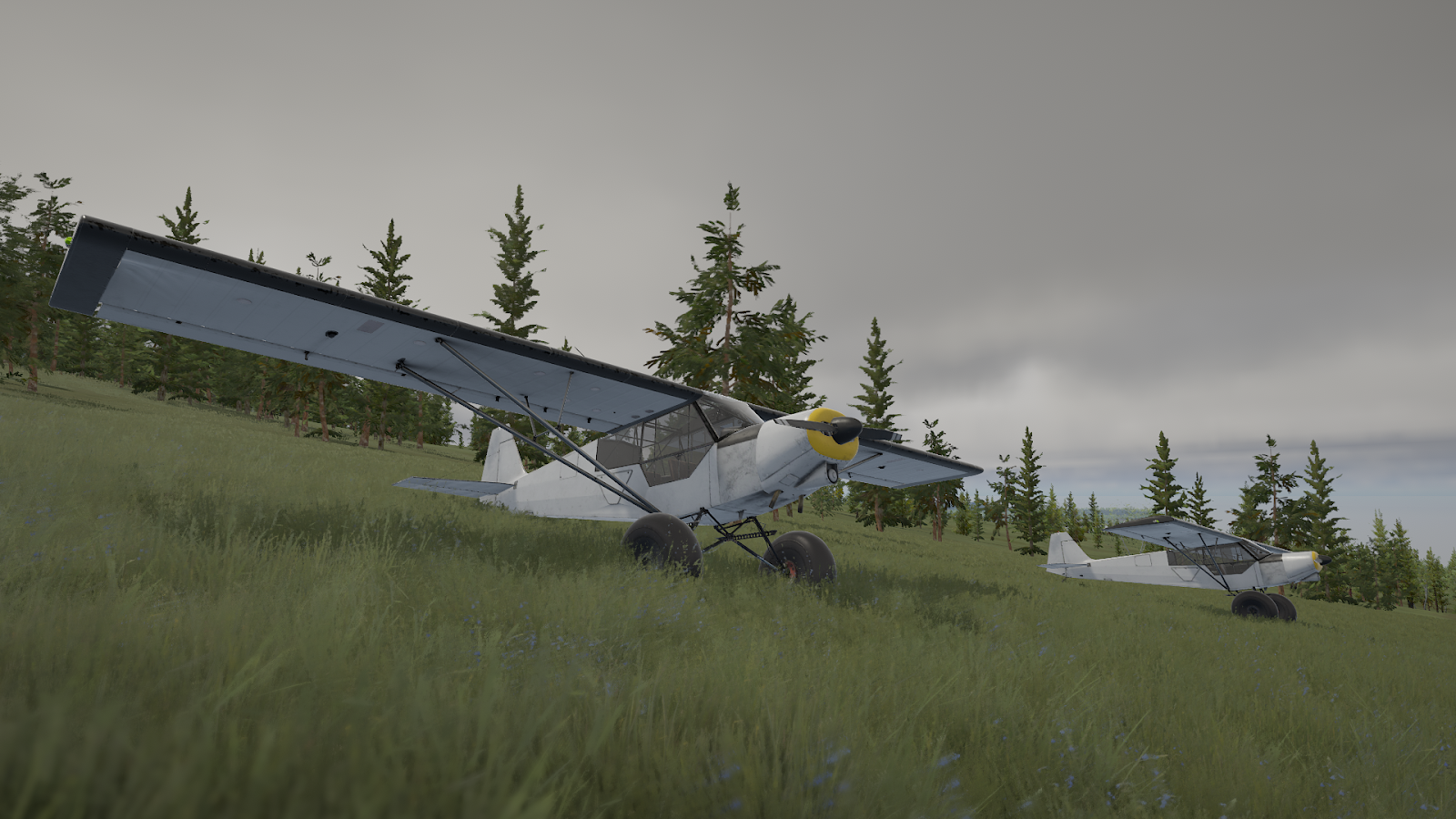
Whether flying with friends in a custom room or letting Deadstick take care of the ‘matchmaking’ for you, players also have the option to enable or disable aircraft to aircraft collisions – should you not wish another player’s lapse in concentration to cost you your hard earned flying dollars!
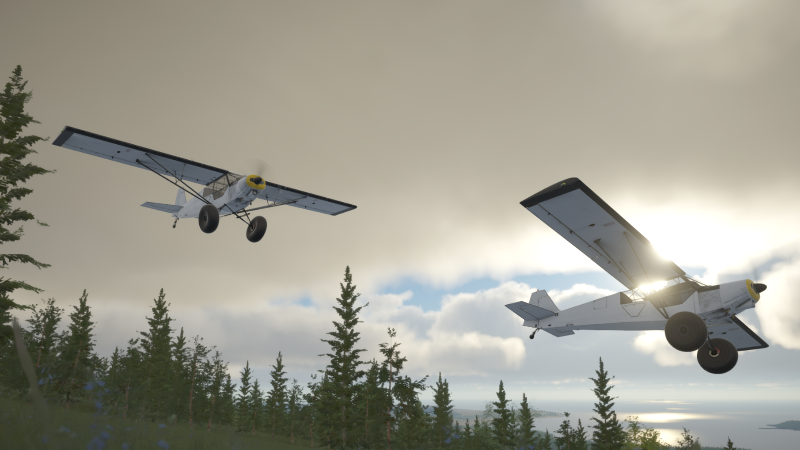
[h3]Voice Communication/VOIP[/h3]
It was absolutely essential to us, if doing multiplayer properly, that voice communication be simulated out of the box.
Deadstick now simulates VHF communication and allows players to tune their radios and chat to other players on the selected frequency. Range effects are also simulated creating a realistic radio environment with which players can communicate.
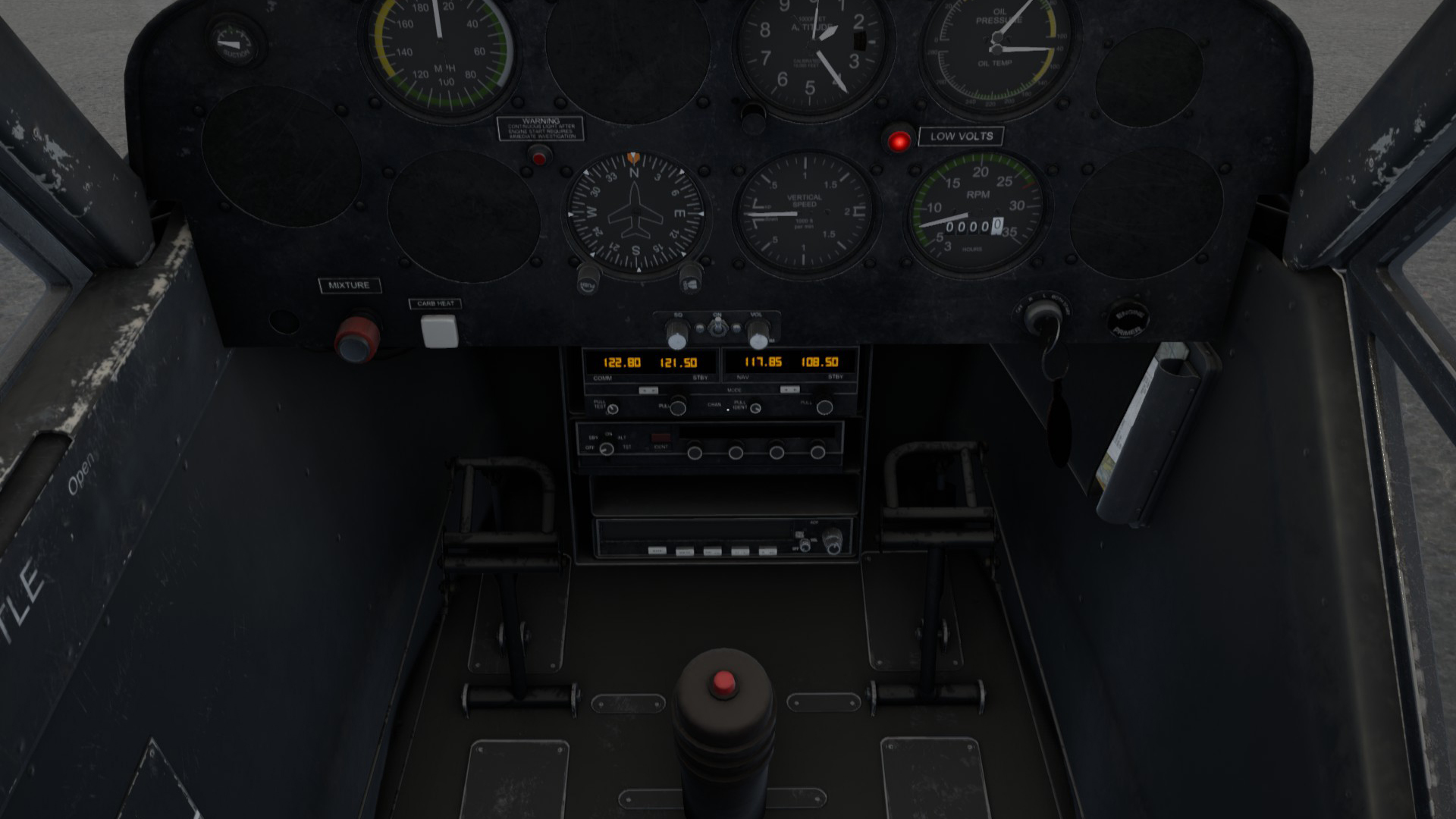
When players are not flying, proximity chat can also be used to speak to those on the ground within the vicinity.
[h2]Breathing World[/h2]
It isn’t just enough to simulate the world and aircraft in Deadstick without too considering the pilot. There are various ‘human factors’ that we expect to occur naturally within Deadstick as pilots attempt to push the envelope of their flying. However, we also wanted to model some of the physiological effects that can occur when flying.
[h3]Fatigue[/h3]
Flying for long periods of time and maintaining situational awareness can be tiring. This is something we want pilots to consider. As a result we now simulate Pilot fatigue. The longer you fly, the more tired you will become. Fly for too long and you will start to get drowsy – vision will darken as eyes start to close, controls will feel less precise and, if you’re not careful, you might just fall asleep! A quick wiggle of the controls can help you wake up if you are just drowsy but, push it too far, and you may find yourself asleep and unable to control your aircraft!
 (Terrain early WIP, time asleep shortened for demonstration)
(Terrain early WIP, time asleep shortened for demonstration)
A tent can be used to catch up on a few hours of sleep between flights or when the weather makes it impossible to fly.
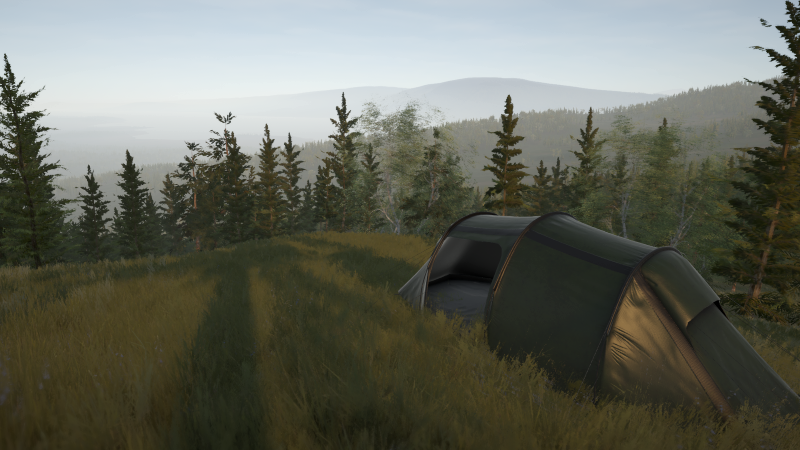
[h3]G-Force[/h3]
A staple amongst flight simulators, but nonetheless something we couldn’t miss from Deadstick, are the effects of G-Force and the loss of peripheral vision that can occur by their sudden onset. Beware though, it’s not just blacking out that should concern you, but the very real chance of structural damage/failure that can occur to your aircraft.
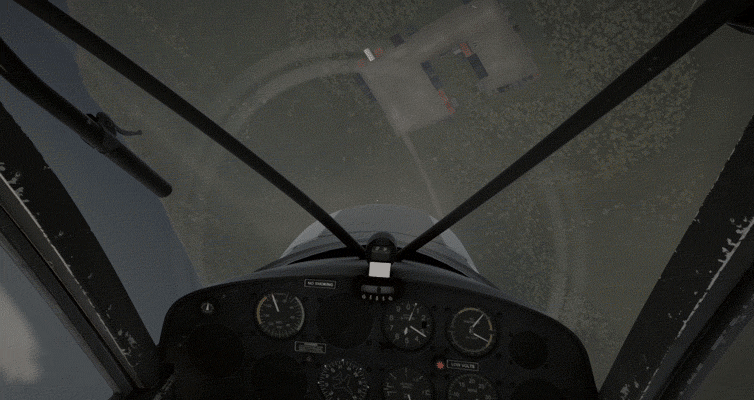
[h3]Hypoxia[/h3]
Most bush planes are not pressurised and our starting aircraft is no exception. If the weather is bad at low level and you are patient enough to endure a long climb, then getting on top of it all could be a good solution. With this in mind we felt it important to also simulate the effects of hypoxia including the time of useful consciousness and how it varies with altitude. The effects of hypoxia are subtle – starting with a loss of colour vision, before coordination deteriorates and eventually consciousness is lost. All again now simulated within Deadstick.
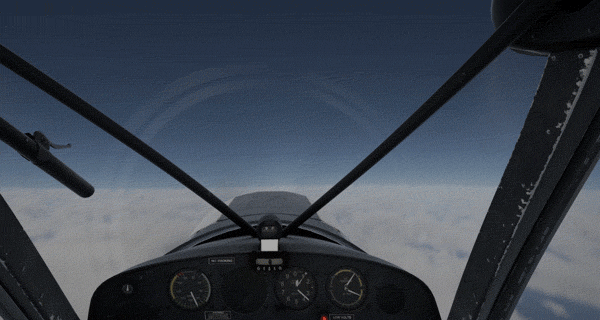
[h2]What's Next[/h2]
While this week's update focused on how we're breathing life into Deadstick's world, next week we'll be touching on the tactile part of the world. We'll cover ground on what kind of processes players will be undertaking as a pilot, from gathering weather and airfield information to refueling and completing checklists.
Much has changed since we last showed the game and it would be impossible to cram everything into this update. The following therefore is a selection of some of the items that the team are most excited to share. Will dive into some of these systems and others in much more detail within future updates!
[h2]Living world[/h2]
[h3]Biomes[/h3]
Whilst much of our focus has been on the underlying terrain generation systems and improving run-time performance, another big addition has been the support of varying terrain biomes. This allows us to have distinct and varied locations within our world, each with their own challenges/considerations as a pilot. From dense forest to sparse tundra and snow capped peaks, pilots will have to learn to quickly adapt to operating in a variety of different conditions and locations all with unique challenges!
[h3]Environmental Effects[/h3]
With an environment comes the need for players to be able to interact with it in their aircraft. Be it snow, mud, grass or gravel, we want each surface to be faithfully represented and have a real impact on the players aircraft.
Many of you will have seen the lengths we went to with the Aircraft damage system to create a real-time dynamic deformation system, ensuring that when you see a dent in a specific location on your aircraft, you know it’s there because you caused it, not because we swapped out a part for a pre-damaged model variant. This feeds heavily into the aircraft ‘survival’ aspect of the game and so, it is only natural we apply this same philosophy to the environment and weather/dirt effects.
As a result, each particle of mud/dirt is accurately simulated and will splatter dynamically all over your, now not so clean, aircraft! These dirt effects aren’t just for show however and will have very real implications on your flying, from obscuring visibility to actually increasing drag and degrading lift on your aircraft.

Not only are splatters simulated but so too is the wetness of the mud – wet mud will stick to the aircraft and actually visibly dry out over time. This may sound like an odd thing to simulate, however this will allow for greater interaction of different dirt types when flying around the world and even washing off dirt during wet weather or, when supported, water assisted landings.

[h3]Multiplayer[/h3]
Whilst a beautiful environment will make for a fun playground to explore in Deadstick, it will not feel alive without other aircraft. To that end multiplayer has always been a key ambition in bringing the world of Deadstick to life. A passive experience in which players don’t have to battle with hosting their own servers, configuring firewalls or sharing IP addresses but, instead, are simply able to enjoy the experience of being a bush pilot and naturally find themselves flying amongst fellow like-minded pilots.

Initially planned for Early Access, this has now been fully realized and requires no effort on the part of the player thanks to our cloud hosted servers. Though it can be disabled if so desired, players will find themselves in a living and inhabited world from the start.
For those pilots who fancy a spot of formation bush flying with their friends, we also have the option of creating private/public rooms in which you can fly together and define your own flying conditions/scenarios.

Whether flying with friends in a custom room or letting Deadstick take care of the ‘matchmaking’ for you, players also have the option to enable or disable aircraft to aircraft collisions – should you not wish another player’s lapse in concentration to cost you your hard earned flying dollars!

[h3]Voice Communication/VOIP[/h3]
It was absolutely essential to us, if doing multiplayer properly, that voice communication be simulated out of the box.
Deadstick now simulates VHF communication and allows players to tune their radios and chat to other players on the selected frequency. Range effects are also simulated creating a realistic radio environment with which players can communicate.

When players are not flying, proximity chat can also be used to speak to those on the ground within the vicinity.
[h2]Breathing World[/h2]
It isn’t just enough to simulate the world and aircraft in Deadstick without too considering the pilot. There are various ‘human factors’ that we expect to occur naturally within Deadstick as pilots attempt to push the envelope of their flying. However, we also wanted to model some of the physiological effects that can occur when flying.
[h3]Fatigue[/h3]
Flying for long periods of time and maintaining situational awareness can be tiring. This is something we want pilots to consider. As a result we now simulate Pilot fatigue. The longer you fly, the more tired you will become. Fly for too long and you will start to get drowsy – vision will darken as eyes start to close, controls will feel less precise and, if you’re not careful, you might just fall asleep! A quick wiggle of the controls can help you wake up if you are just drowsy but, push it too far, and you may find yourself asleep and unable to control your aircraft!
 (Terrain early WIP, time asleep shortened for demonstration)
(Terrain early WIP, time asleep shortened for demonstration)A tent can be used to catch up on a few hours of sleep between flights or when the weather makes it impossible to fly.

[h3]G-Force[/h3]
A staple amongst flight simulators, but nonetheless something we couldn’t miss from Deadstick, are the effects of G-Force and the loss of peripheral vision that can occur by their sudden onset. Beware though, it’s not just blacking out that should concern you, but the very real chance of structural damage/failure that can occur to your aircraft.

[h3]Hypoxia[/h3]
Most bush planes are not pressurised and our starting aircraft is no exception. If the weather is bad at low level and you are patient enough to endure a long climb, then getting on top of it all could be a good solution. With this in mind we felt it important to also simulate the effects of hypoxia including the time of useful consciousness and how it varies with altitude. The effects of hypoxia are subtle – starting with a loss of colour vision, before coordination deteriorates and eventually consciousness is lost. All again now simulated within Deadstick.

[h2]What's Next[/h2]
While this week's update focused on how we're breathing life into Deadstick's world, next week we'll be touching on the tactile part of the world. We'll cover ground on what kind of processes players will be undertaking as a pilot, from gathering weather and airfield information to refueling and completing checklists.